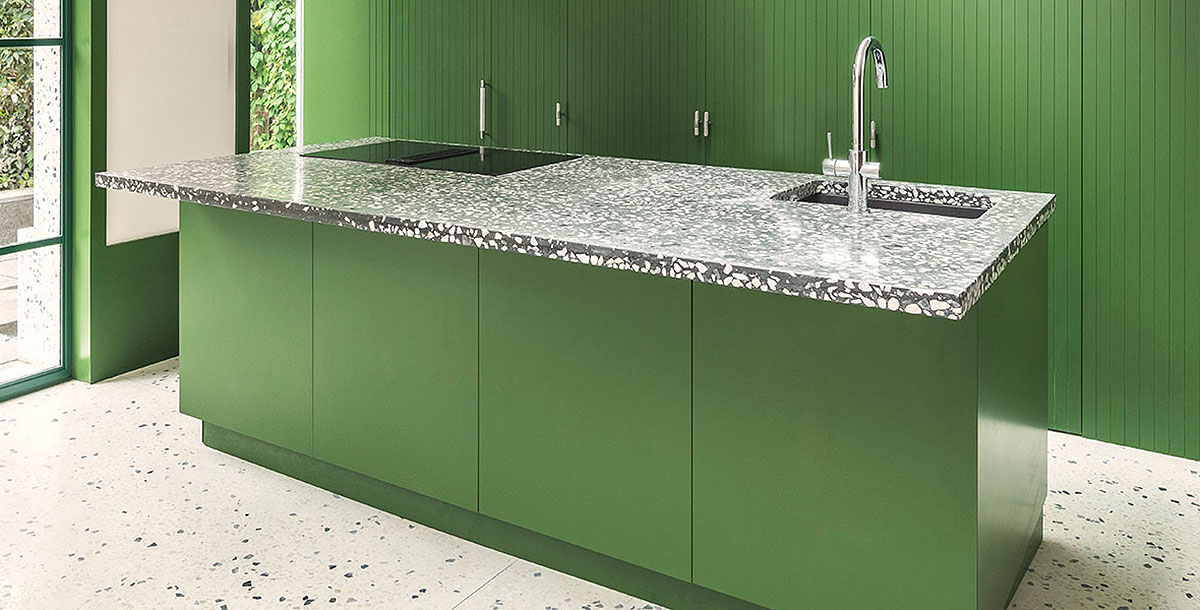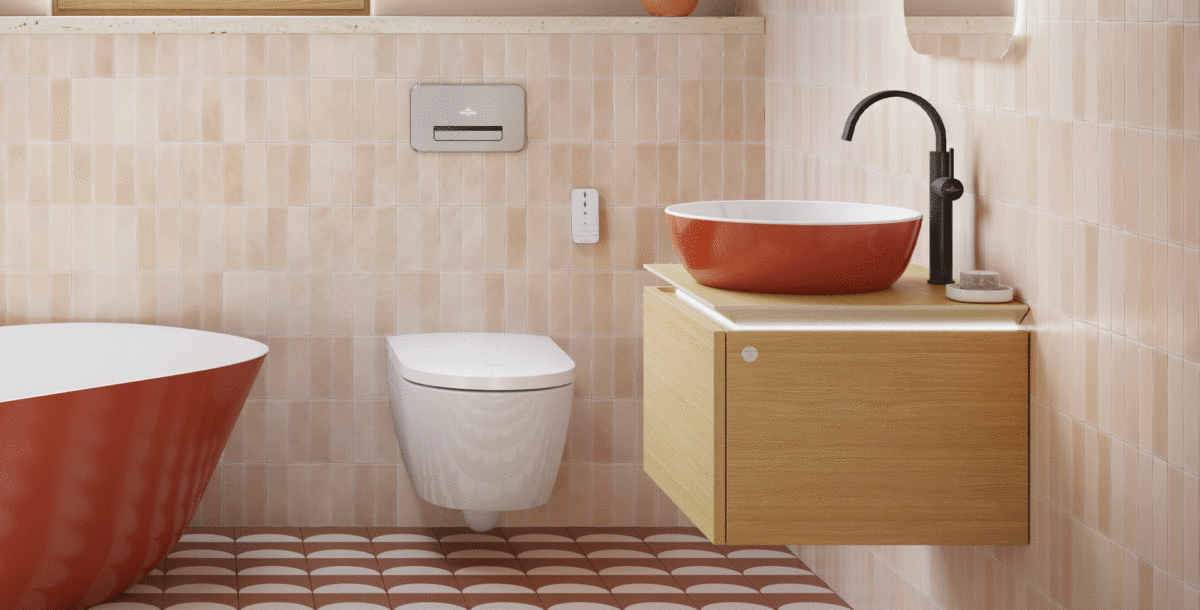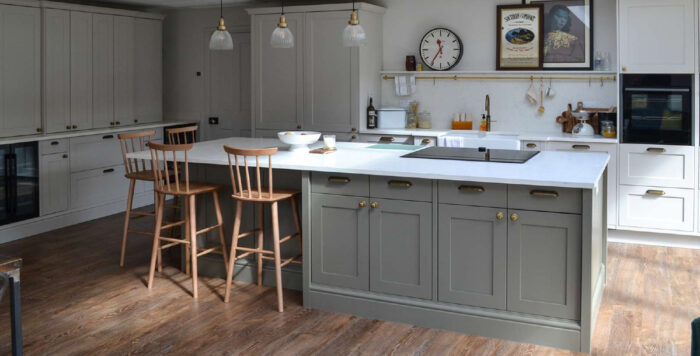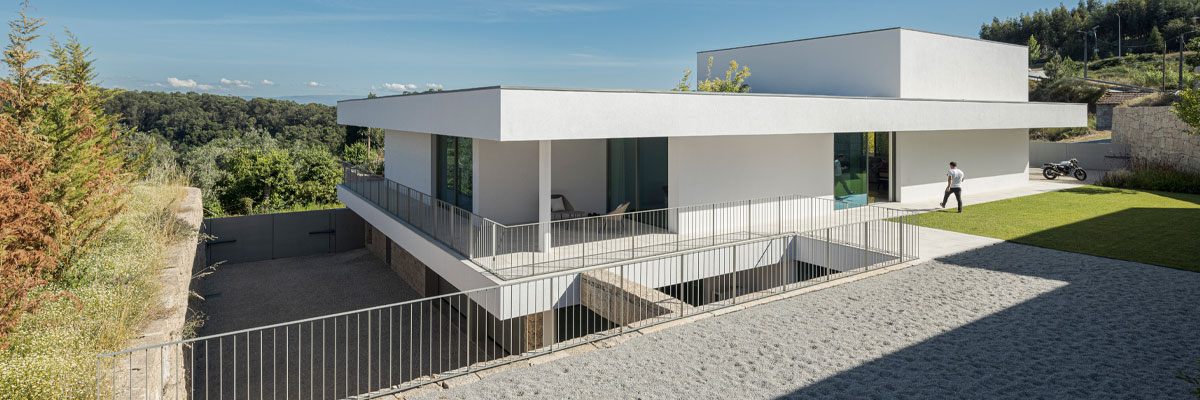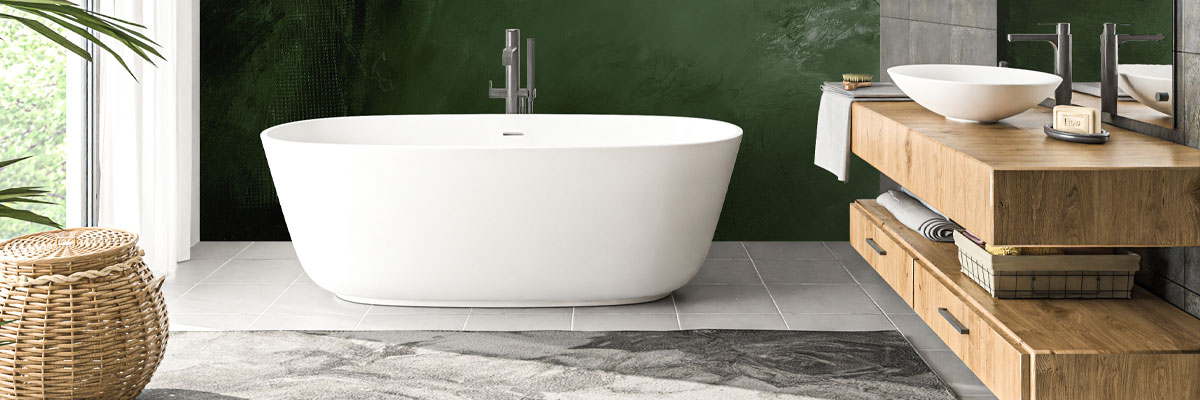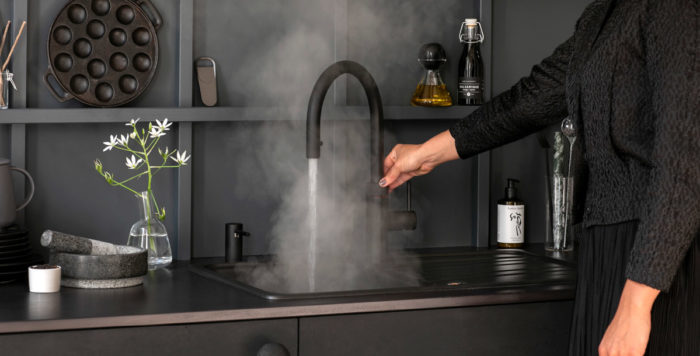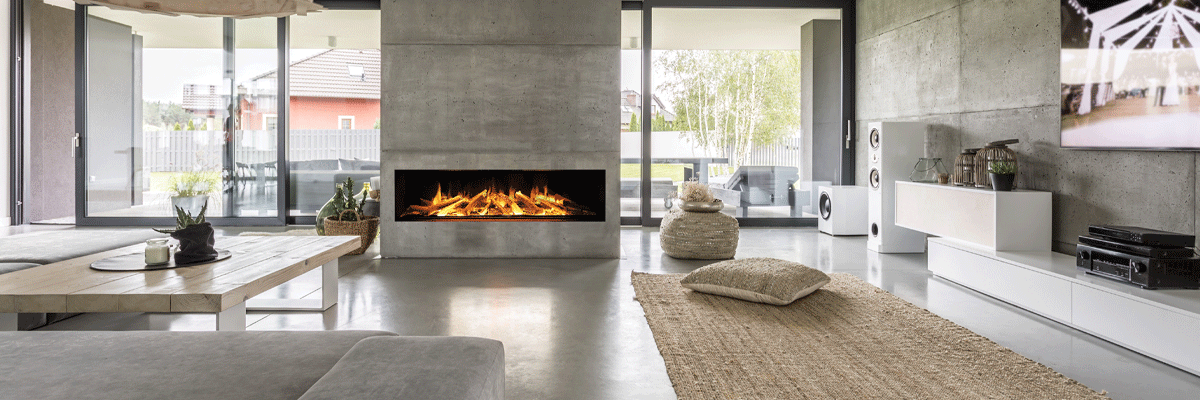Terrazzo: a buyer’s guide
There’s far more to this material than its attractive speckled finish
Traditionally a flooring choice with a rich history, terrazzo has had a renaissance of late, favoured for its distinctive look and used in ever more surprising applications around the home. Terrazzo worktops, tiles and flooring can be featured in interiors.
Widely used in commercial spaces for its durability, terrazzo is making its way into our homes as a distinctive, sustainable material for flooring, wall-coverings and surfaces.
It was developed centuries ago in Italy as a budget flooring solution, using waste chips from the marble industry as a cost-cutting aggregate.
With the advent of resin terrazzo, it’s become a sought after aesthetic. While it can be demanding to manufacture and install, it’s perfect for new builds who want to add character, with huge scope for customising the colours, shapes and formations for a bespoke, individual look that’s relatively easy and cheap to achieve.
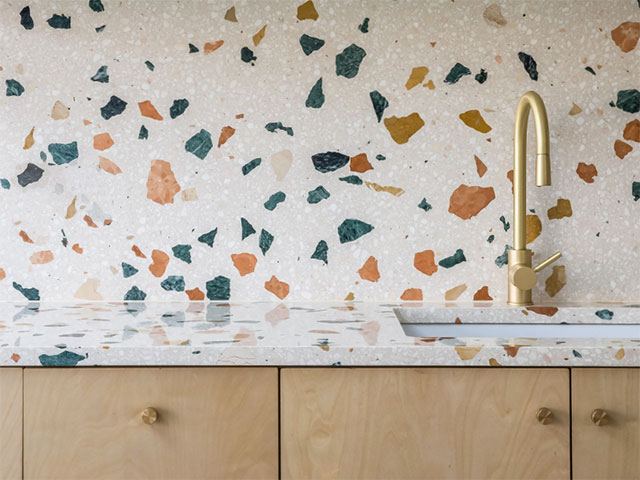
Photo: Homeowners Andrew and Francesca asked terrazzo specialists Diespeker & Co for bespoke worktops and splashbacks in distinct TE081 terrazzo to bring character to their otherwise neutral kitchen space.
Poured terrazzo floors
Technological developments are extending the range of terrazzo types but the two main ones are cement-based and resin-based. Classic terrazzo is a mix of marble or granite aggregates set into a cement binding agent, which is ground and polished to create a smooth surface.
It is resilient, can be used inside or out, and be cast in situ or laid as tiles. Combining aggregates with an epoxy or polyurethane system is the most common installation type today.
More flexible than concrete and less likely to crack, resin-based terrazzo can be installed quickly and is a thinner, stronger material than concrete.
‘Installing poured resin terrazzo is a more time-consuming procedure than laying precast tiles, and the surface needs to be ground and polished, making it more suitable for a new build or refurbishment,’ explains John Krause, managing director, Diespeker & Co.
Poured resin terrazzo has no joins for dirt to collect in, so it’s easy to keep clean. It doesn’t suffer from mould or shrinkage, which makes it a good choice for a bathroom, and is light enough to be used upstairs. It can’t, however, be used outside and both resin and cement terrazzo need to be sealed.
As with most flooring, the surface that the terrazzo covers needs to be level, especially if it’s going to be poured on top. It needs a good, solid substrate and can be installed over a screed base or, as it’s so light, onto plywood.
Resin terrazzo is more expensive by comparison to cement but it is far more durable, so will last longer, as much as 25 years if cared for properly.
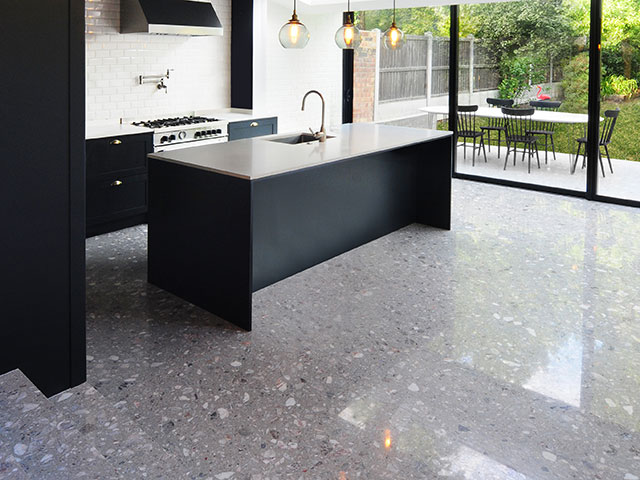
Photo: Architects bureau de change sourced Fior di Pesco resin terrazzo slabs from InOpera for the floor of this contemporary kitchen extension.
Terrazzo tiles
Terrazzo flooring can be pre-cast and cut into slabs to make for a more exacting finish and better control over how the aggregates sit in the resin or cement, affecting the final look. Tiles or slabs are easier to install, which can reduce the cost. Tiles are generally laid finished, without the need for grinding and polishing.
Cement tiles featuring terrazzo elements are also popular, as are terrazzo-effect porcelain tiles for an easy and cost effective way to achieve the look.
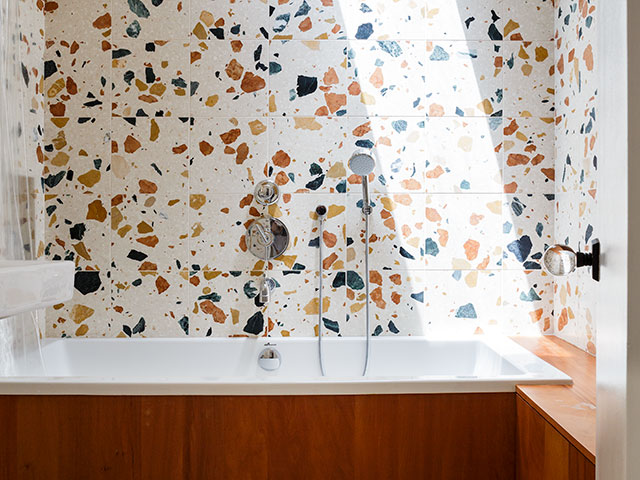
Photo: Marmoreal marble and resin precast tiles by Max Lamb, available in white or black with a honed or polished finish, from Dzek.
Alternative terrazzo surfaces
The change from cement-based terrazzo to resin has other benefits. As it’s more flexible and less likely to crack, it can be used for other applications, such as worktops and walls.
With the renaissance in this material has come a new wave of design-forward manufacturers creating with it – offering the ability to create exciting three dimensional surfaces and terrazzos made from unique materials.
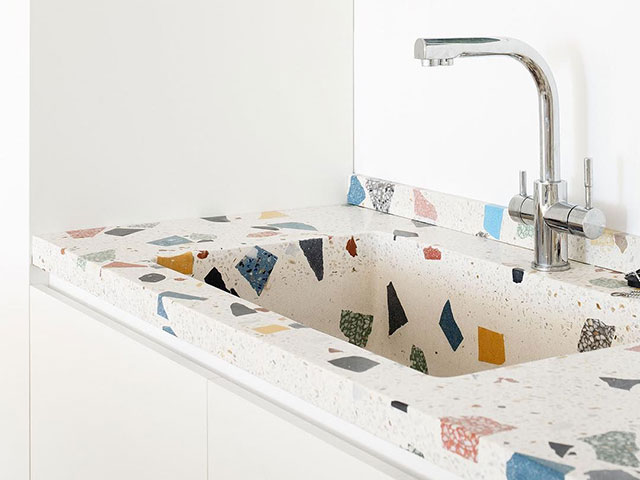
Photo: This bespoke kitchen sink, top, and legs by Mallorca-based Huguet is formed of a terrazzo made with cement recycled chips and 8mm macael aggregate.

